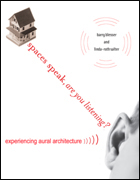During her “Reality is Broken” GDC Rant games researcher and creator Jane McGonigal made a funny, poetic and passionate plea for game designers to do nothing less than change the world.
The nut of her argument was that game designers are in the business of making people happy and they’ve gotten quite good at it over the years. So, why put limits on this magical art at the boundaries of the game board or box? Why not use these skills to make the mundane, painful and sad exciting, safe and wonderful?
The premise seems so self-evidently positive that I think the four or five hundred people in audience in were a bit taken aback by the question posed by game developer and deep thinker Jonathan Blow.
What Blow wanted to know is this: McGonigal offered lots of examples and ideas of how game design could make the world a better, and more fun place. One example dealt with getting players wired up to something like the Nike+ running system, so that lumpy WOW players could level up their characters by running around the neighborhood. Tah dah! Exercise plus making the grind fun again. (McGonigal actually has been playing around with games using her own running).
Blow wondered if this was really such a good idea. Did we want to make something as natural and simple as running into something burdened with context and rules and conceptual overhead? He countered with the “game” of frequent flier miles. Where once you could simply take a flight, now you have to barter, negotiate, scheme and plan to optimize, not just travel schedules, but frequent flier mile accumulation and distribution.
I don’t think Blow was satisfied with McGonigal’s answer that good and smart and kind game developers simply would not design ugly, nasty and no-fun systems like the frequent flier mile example.
For me, this also raised another issue: Is there such a thing as too much fun? Should we be making our homes, and schools and bus stops and office spaces more fun, more enjoyable, more playful?
I don’t have an answer to that one, anymore than there is a ready answer to the question, “Does turning our lives into games make them more complicated than just letting them be a little boring a lot of the time?”
Here, I’d just like to point out the connection of questions and suggest that before we go about turning the planet into a fun house, might want to consider the consequences. After all, wasn’t that what concerned Guy Debord in The Society of the Spectacle?
 If you study videogames and architecture, a common response when people ask what you research is:
If you study videogames and architecture, a common response when people ask what you research is:
 I’ve been meaning to post about this for a while. In the world of virtual design and virtual environments we have recapitulated some bad habits from the history of architecture around giving primacy to the image. Our environements are about a lot more than what we can see, as a new book makes clear:
I’ve been meaning to post about this for a while. In the world of virtual design and virtual environments we have recapitulated some bad habits from the history of architecture around giving primacy to the image. Our environements are about a lot more than what we can see, as a new book makes clear: